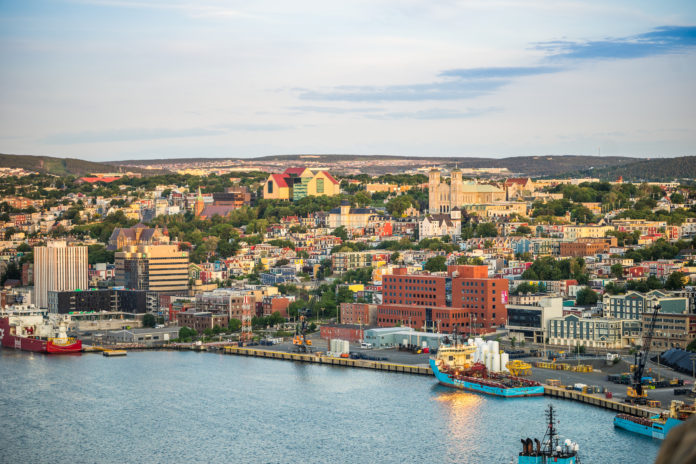
Newfoundland & Labrador’s shrinking population makes immigration especially important as its economy struggles to recover post-COVID-19.
In its provincial economic outlook, the Royal Bank of Canada notes growth in the Newfoundland & Labrador economy this year will trail that of other Canadian provinces despite the easing of public health restrictions imposed during the pandemic.
“We expect the boost the Newfoundland & Labrador economy will get from the eventual easing of pandemic restrictions will be partly offset by declining capital investment and shrinking population,” writes RBC economist Carrie Freestone.
“These factors will restrain growth not only in 2021 – when we project Newfoundland & Labrador to trail all other provinces with a rate of 2.8 per cent (GDP growth) – but also over the medium term, delaying full recovery.”
Read More
Newfoundland Calls For Proposals to Improve Settlement Services to Immigrants
Multiple IT Jobs Add to Newfoundland’s List of In-Demand Occupations
New Job Offer Requirements for Newfoundland’s International Graduate Category
There have been bright spots in Newfoundland & Labrador. The oil industry and metal mining production on The Rock ended 2020 stronger than many economists had expected. The province’s unemployment has also been able to fully recover from the hit it suffered during the pandemic.
Declining Population Poses Challenge To Economic Growth
But there are serious challenges ahead. Major construction projects that employed thousands are nearing completion and so will result in layoffs. Other potential projects, such as the West White Rose offshore oil platform, have been cancelled.
With the province already carrying the highest debt-to-GDP ratio of all Canadian provinces, it has limited room to take action to stimulate its economy.
“A declining population poses a major challenge for both the short and long terms,” writes Freestone.
Prior to the announcement of the cancellation of the West Wild Rose oil project, TD Economics pegged possible real GDP growth in Newfoundland & Labrador this year at 3.7 per cent.
In their provincial economic forecast, It’s Always Darkest Before Dawn, the bank’s chief economist Beata Caranci, deputy chief economist Derek Burleton, and economists Rishi Sondhi and Omar Abdelrahman pointed out the province’s labour force was not hit as hard by the pandemic as many other regions of the country.
“Like its Atlantic Canada peers, this was supported by hiring in the public sector as well as a strong recovery in close-contact industries,” they wrote. “The relatively limited spread has also been reflected in consumer spending resilience.”
Both Ottawa and Newfoundland & Labrador have announced plans to boost immigration following the pandemic.
Newfoundland & Labrador Committed to Ramping Up Immigration Intake
“In its budget speech (last year), the provincial government has highlighted its goal to ramp up its immigrant intake above 2,000 by 2022,” writes TD Economics. “Making good on these plans will be critical to Newfoundland & Labrador’s medium-term fortunes.”
Immigration, Refugees and Citizenship Canada’s figures for last year show business immigration programs were those hardest hit by COVID-19 in Newfoundland & Labrador last year.
The number of new permanent residents to the province under business immigration programs, including the Federal Self-Employed Class and Start-Up Visa program, fell to zero from 20 the previous year, a drop of 100 per cent.
Worker programs were also hard hit during the pandemic as travel restrictions due to COVID-19 slowed immigration to a trickle. The number of new permanent residents to Canada under the Canadian Experience, Caregiver, Skilled Trade, Skilled Worker and Atlantic Immigration Pilot programs in Newfoundland & Labrador fell by 55.6 per cent, to 275 in 2020 from 620 the previous year.
Fortunately, economic immigration overall – although still hard-hit – fared much better.
Economic immigration to Newfoundland & Labrador drew 560 fewer new permanent residents in 2020, or 46.9 per cent less compared to the previous year.
The Provincial Nominee Program (PNP) helped mitigate the drop in other economic immigration programs. Last year, it sagged only 36.8 per cent, or by only 210 fewer new permanent residents to Newfoundland & Labrador under the PNP compared to 570 the previous year.
Family Sponsorship programs dropped by 42 per cent, to 145 new permanent residents to the province last year compared to 250 the previous year.
Refugees and Protected Persons
Arrivals of refugees and protected persons practically came to a standstill in 2020, plummeting 67 per cent to only 130 from 390 in 2019.
Ottawa remains firmly committed to boosting immigration again with much more ambitious targets for this year and the next two.
Immigration Minister Marco Mendicino announced late last year that Canada was going to greatly increase immigration levels to make up for the shortfall in 2020 due to the COVID-19 pandemic.
Under the new plan, Canada is planning to welcome more than 1.2 million newcomers between 2021 and 2023 with 401,000 new permanent residents to Canada in 2021, 411,000 in 2022 and 421,000 in 2023.
Prior to the coronavirus pandemic, the previous plan set targets of 351,000 in 2021 and 361,000 in 2022.
“Immigration is essential to getting us through the pandemic, but also to our short-term economic recovery and our long-term economic growth,” said Mendicino. “Canadians have seen how newcomers are playing an outsized role in our hospitals and care homes and helping us to keep food on the table.
“As we look to recovery, newcomers create jobs not just by giving our businesses the skills they need to thrive, but also by starting businesses themselves,” he said. “Our plan will help to address some of our most acute labour shortages and to grow our population to keep Canada competitive on the world stage.

